An easy to identify family of mushrooms, the Rustgills have rusty looking gills and this one is common and can grow in large numbers on conifer debris or woodchip.
Home / Mushroom Guide /
Common Rustgill
Common Rustgill
| Mushroom Type | |
| Common Names | Common Rustgill (EN), Tagell Goch Gyffredin (CY), Łysak Plamistoblaszkowy (PL), Foltoslemezű Lánggomba (HU) |
| Scientific Name | Gymnopilus penetrans |
| Synonyms | Flammula penetrans, Dryophila penetrans |
| Season Start | Aug |
| Season End | Dec |
| Average Mushroom height (CM) | 3-8 |
| Average Cap width (CM) | 2-6 |
Cap
2-6 cm. Tawny/yellow/orange to brown coloured, darker towards the middle with very fine velvet like scales or hairs. Starting convex but soon flattening with an uneven edge.
Gills
The gills start pale yellow and slightly run down the stem(decurrent) on young mushrooms but they soon change to dark tan with rust coloured spots and the gills rise just before joining the stem (adnate).
Stem
3-8 cm long, 0.3-1 cm diameter. Tan to orange and covered in fine, off white fibres running up and down the stem. Can be lighter at the top and the base is usually covered in fine white down.
Habitat
Mainly on conifer stumps and debris but can be found with hardwoods and growing in woodchip.
Possible Confusion
The Velvet Shank, (Flammulina velutipes), pictured, looks very similar when young but develops a black velvety stem when mature. It has thicker, more widely spaced gills that start white and turn off white, pale yellow, the cap is viscid, unlike the Common Rustgill, they grow in much larger clusters and grow in different seasons. December to April for the Velvet Shank, June to just about December for the Common Rustgill.
Spectacular Rustgill (Gymnopilus junonius) is similar but it usually has a scaly cap and a ring on the stem.
Spore Print
Rust brown. Almond shaped.
Frequency
Common.
Other Facts
This mushroom is classed as inedible possibly poisonous so is best avoided.


 (21 votes, average: 4.00 out of 5)
(21 votes, average: 4.00 out of 5)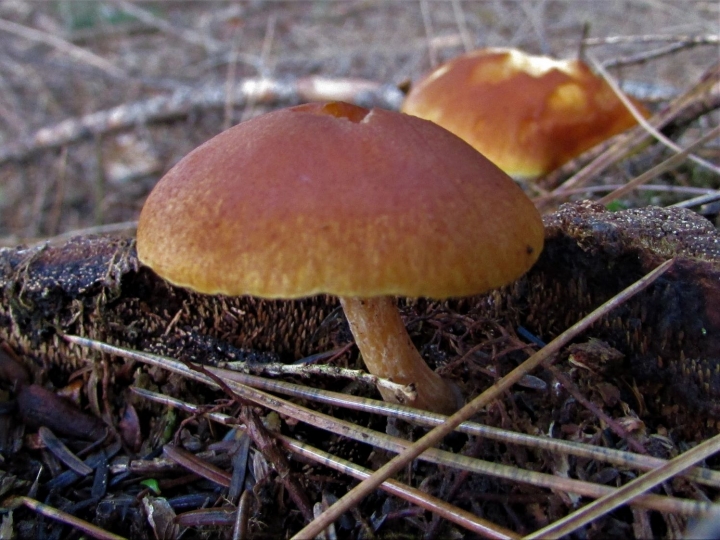
















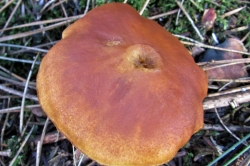
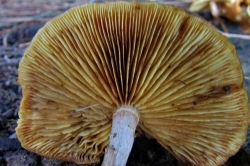
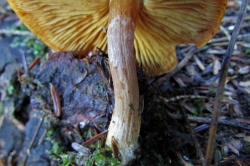
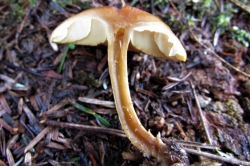
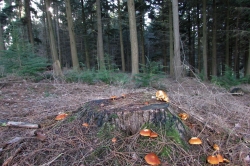
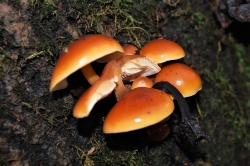






Leave a Reply